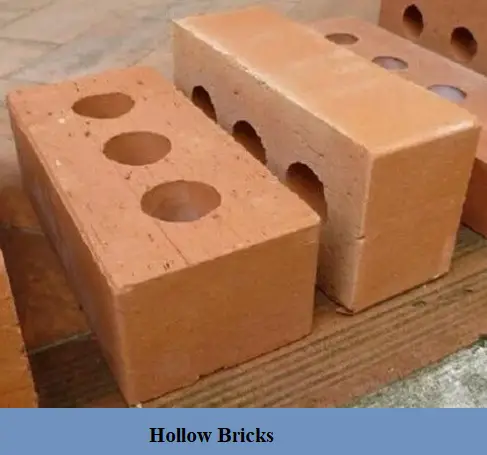The bricks that have holes are known as hollow bricks. These bricks are also known as porotherm bricks. Hollow bricks are perforated either horizontally or vertically.
Hollow brick is very light in weight and it reduced the dead load on the structure. Hollow bricks are very cheap because they took less material to manufacture.
Hollow bricks provide a very economical and sustainable building design. Decorative hollow bricks are also used for the purpose of aesthetics.
Hollow bricks are lighter than conventional clay bricks and fly ash bricks. These bricks are made of clay and other recyclable materials.

Table of Contents
Properties of Hollow Bricks:
- These bricks are eco-friendly.
- Hollow bricks provide sound insulation.
- Hollow bricks work as a thermal insulator in the building.
- The weight of hollow bricks is very low.
Advantages of Hollow Bricks:
- Hollow bricks are very lightweight bricks.
- They are very cost-effective.
- These are eco-friendly bricks that do not lead to pollution.
- It balances the temperature due to thermal insulation.
- Hollow bricks provide sound insulation.
- electrical and plumbing fixtures can be easily passed through the hollow space.
- Hollow bricks required very little or no maintenance.
Disadvantages of Hollow Bricks:
- Hollow bricks can not be used for multi-story buildings or skyscrapers.
- Load-bearing capacity is very low.
Uses of Hollow Bricks:
Hollow bricks can be used for both load-bearing structures and non-load-bearing structures. These bricks are not suitable for large construction projects and high-rise buildings.
Size of Hollow Bricks:
The most common sizes of hollow bricks are as follows:
- 400 mm x 200 mm x 100 mm.
- 400 mm x 200 mm x 150 mm.
- 400 mm x 200 mm x 200 mm.
- 400 mm x 200 mm x 300 mm.
